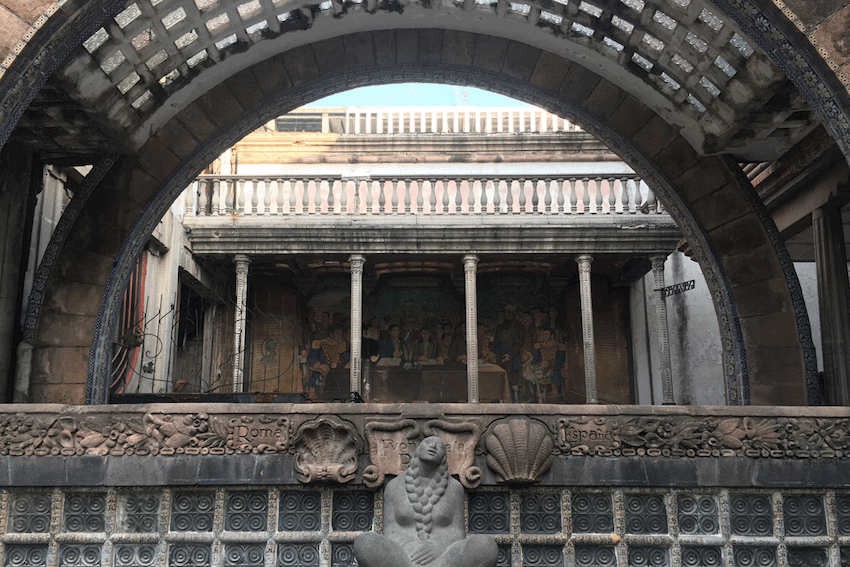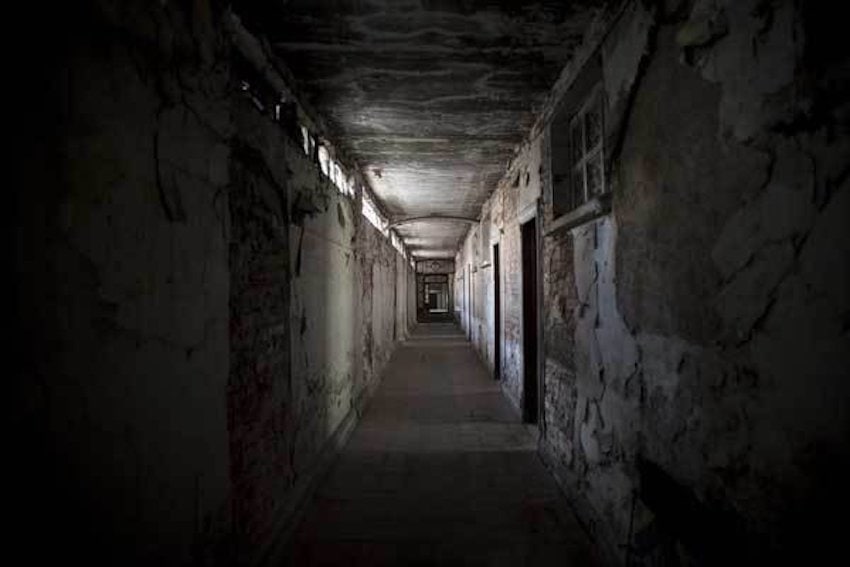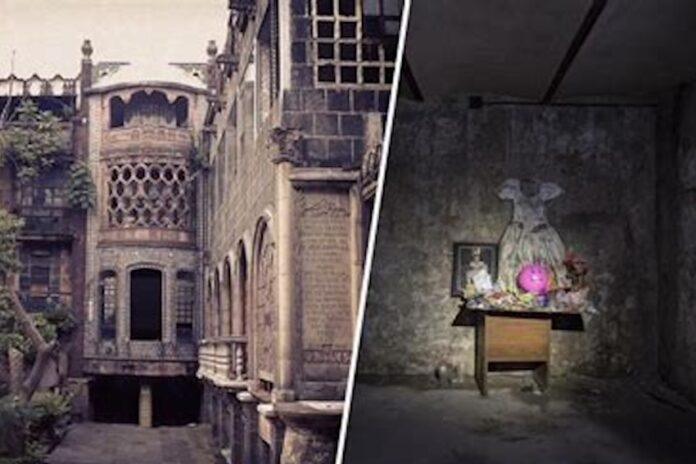On the corner of Avenida Niños Héroes and Calle Dr. J. Navarro looms a towering, derelict structure with a facade resembling a collage — different patterns of brick and tile punctuated by arched windows and iron-wrought balconies. As is the unfortunate fate of many abandoned buildings, it’s swarming in graffiti and shards of broken glass. It’s hard to imagine that 80 years ago, this crumbling edifice was set to be the world’s most extravagant hotel — only, it never was.
What’s the history behind (and beneath!) Posada del Sol, the architectural gem situated in the center of the Doctores neighborhood? More importantly, what’s its future?
A Spanish visionary’s idea for a Mexican marvel

The year was 1945, and the Doctores neighborhood was growing, attracting working-class families and small business owners thanks to a central location and affordable housing. Originally called “Hidalgo,” the area became known as Doctores because almost all of its streets were named after famous physicians. It seemed to Spanish-born engineer Fernando Saldaña Galván the ideal place to unleash his vision: a luxurious complex intended as a meeting place for artists and intellectuals, featuring more than 600 rooms, an auditorium, a chapel, theater, library, and swimming pool.
The building showcased a fusion of architectural styles — art deco, baroque, and neo-colonial design. The complex overtook more than half a block; fifteen buildings behind giant green gates housed gardens, patios, fountains, terraces, and brightly painted murals, not to mention Turkish baths and tea rooms. Local lore speaks of winding secret passages beneath the structure, perhaps serving as staff transport or,more enticingly, occult rituals. Like so much about Posada del Sol, their existence remains unverified. What is verified is a spectacular fountain created by Colombian artist Rómulo Rozo, which depicts a woman gazing at the universe. Roberto Cueva del Río, a Puebla artist commissioned by President Lázaro Cárdenas on several occasions, painted a scene from the constitutional signing of Apatzingán in 1814. Inside the garden is a stone plaque signed by Saldaña Galván himself, which reads “Considering the adverse circumstances during the execution of La Posada del Sol that there will be few men capable of projecting, building, and finishing it.” These words would seal the hotel’s fate — the Posada remained open to the public for just a few months.
From dream to nightmare
The hotel opened while construction was still being completed, though work would be totally suspended the same year of its inauguration. Saldaña Galván’s financial burden was overwhelming — some publications, like El Financiero, suggest that he once held a position in public office, which allowed him to obtain resources necessary to build it. This strategy ultimately proved insufficient in completing his ambitious vision.
The building was quickly expropriated by the government and, according to family relatives, Saldaña Galván fell into a deep depression. Details about his death in 1952 remain murky: some say his body was found hanging from a bell in the courtyard, directly in front of a San Francisco de Asís statue. Other legends take it a step further, claiming he murdered his wife and children before taking his own life. A factual explanation has yet to be released, though most agree that he committed suicide due to economic pressures. Interestingly enough, there are no published photos of Saldaña Galván to be found.
For about two decades, Posada del Sol would serve as various administrative headquarters before finally falling into neglect under the care of federal authorities in the late 1970s. Since then, the hotel has remained abandoned, possibly due to high restoration costs, structural concerns, and overall bureaucratic issues.

The ghost stories that define Posada del Sol
The abandoned halls of Posada del Sol have become a magnet for the macabre. Neighbors have claimed to hear screams at night, documentary filmmakers have reported unexplained shadows and feelings of being watched.
Among these tales, the little girl of room 103 has proven remarkably persistent.
During the 1960s, the Hotel Posada del Sol became the headquarters of IDECO, a community development and rural housing institution. Employees had access to a daycare center within the old hotel’s walls. Legend has it that one little girl went missing, and after several hours of investigation, her lifeless body was found in room 103. Another version of the same legend claims that the girl’s ghost is actually that of Fernando Saldaña’s daughter.
Whoever the unfortunate child might be, her spirit remains trapped in that room and anyone who dares to enter might encounter her ghost. The walls are adorned with cartoon drawings and cryptic messages, and in the back corner is an altar holding an antique girl’s dress and candies, toys, faded photographs, flowers, and candles. Visitors leave such offerings not out of the goodness of their hearts but rather out of fear: it’s believed that the girl curses those who explore the hotel ruins without leaving her a gift.
Further supporting the legend are the actors and production teams of “Yago”, a Mexican telanovela, and the sequel to “Km 31”, a Mexican horror flick. Some report having seen the girl appear in room 103, and others admitted fear kept them from going to the bathroom alone. Rumors swirl that in an attempt to keep the child “calm”, the production team created the aforementioned altar and continues its upkeep to this day.
Modern attempts and the fate of the hotel
The history of Posada del Sol’s abandonment has been punctuated by repeated attempts at revival, each ending in failure. In 1998, local politicians tried to convert the premises into the Office of the Attorney General of Justice of the Federal District. Unfortunately, that plan never materialized.
It was subsequently contemplated that it would make a great headquarters for a Faro de Artes y Oficios (Arts and Crafts Workshop). But that idea never came to fruition, either. In January 2021, the Real Estate Heritage Committee of the Government of Mexico City donated the property in the Doctores neighborhood to the Universidad del Bienestar Benito Juárez to create the law school. The donation was announced by Claudia Sheinbaum, then the head of government of CDMX. Sheinbaum explained that the Building Safety Institute had to conduct a very thorough study to determine which parts could be demolished and which parts could be reconstructed.
Yet even this latest initiative appears stalled. Sheinbaum estimated that the new Law School would operate that same year. However, the Universidad del Bienestar portal indicates that renovation work has not yet been carried out at Posada del Sol. Until now, no definitive plans have been realized.
The building currently belongs to the Government of the capital and is used occasionally as a location for film productions, as well as a warehouse for confiscated furniture. Some believe it was the architect himself who sealed the building’s fate — by placing a curse on the premises before his death, he ensured his beloved posada would never be anything else. Today, the structure remains in oblivion, its future as uncertain as the legends that haunt its corridors.
Bethany Platanella is a travel planner and lifestyle writer based in Mexico City. She lives for the dopamine hit that comes directly after booking a plane ticket, exploring local markets, practicing yoga and munching on fresh tortillas. Sign up to receive her Sunday Love Letters to your inbox, peruse her blog or follow her on Instagram.
